Gyudon (beef bowl) restaurants are Japan’s culinary time machines—delivering maximum satisfaction with minimum fuss. They orchestrate an unbeatable six-star symphony that no other fast food can match: wallet-friendly prices, lightning-fast service, mouth-watering flavors, solid nutrition, everywhere accessibility, and 24/7 availability.
The Magic Formula: Why Gyudon Chains Rule Japan’s Food Scene
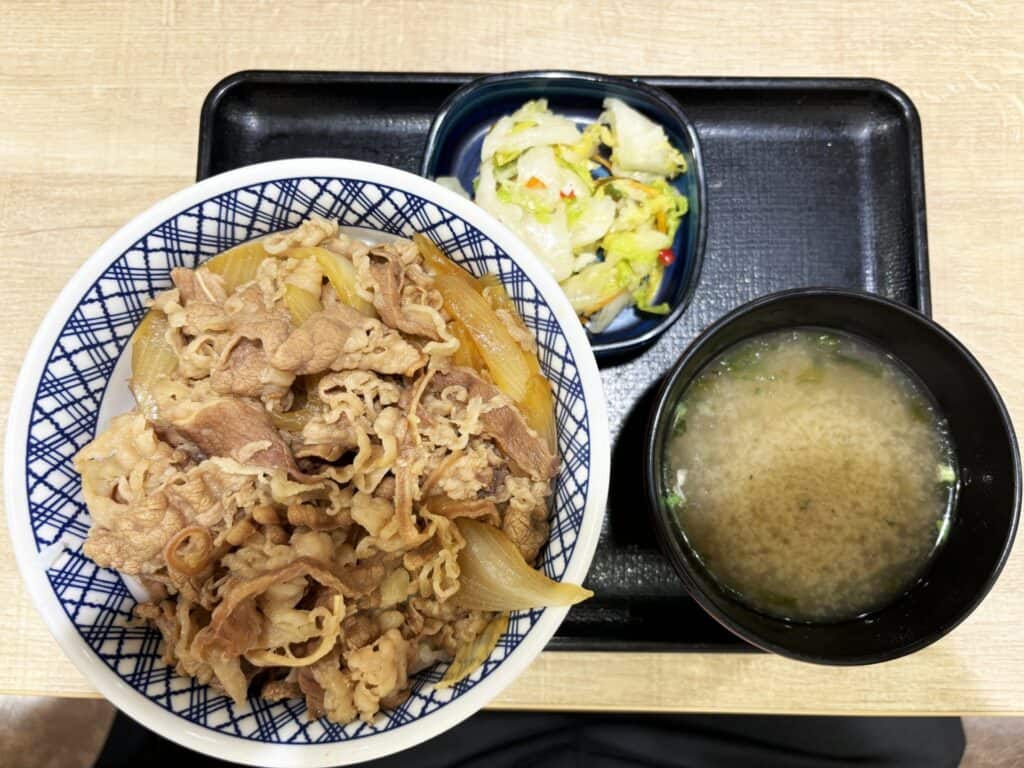
Budget-Friendly Feasts
The “Big Three” powerhouses—Yoshinoya, Sukiya, and Matsuya—deliver complete meals (beef bowl + salad + miso soup) for just ¥550-600. This price tag makes even convenience store bentos sweat with competition. When every yen counts, gyudon chains deliver maximum bang for your buck.
Three-Minute Miracles
These efficiency temples have perfected the art of rapid service. Your steaming bowl arrives within three minutes of ordering—even during rush hour, you’ll never wait more than five. For the chronically time-starved, this predictability is culinary gold.
Flavor Bombs in a Bowl
The gyudon itself? A masterpiece of umami engineering—thinly sliced beef and caramelized onions swimming in a savory-sweet symphony that penetrates every grain of rice. While particularly beloved by businessmen, these chains have evolved beyond beef with curry, unagi (eel), karaage (fried chicken), and deconstructed “gyu-sara” options that separate components for the mix-it-yourself crowd.
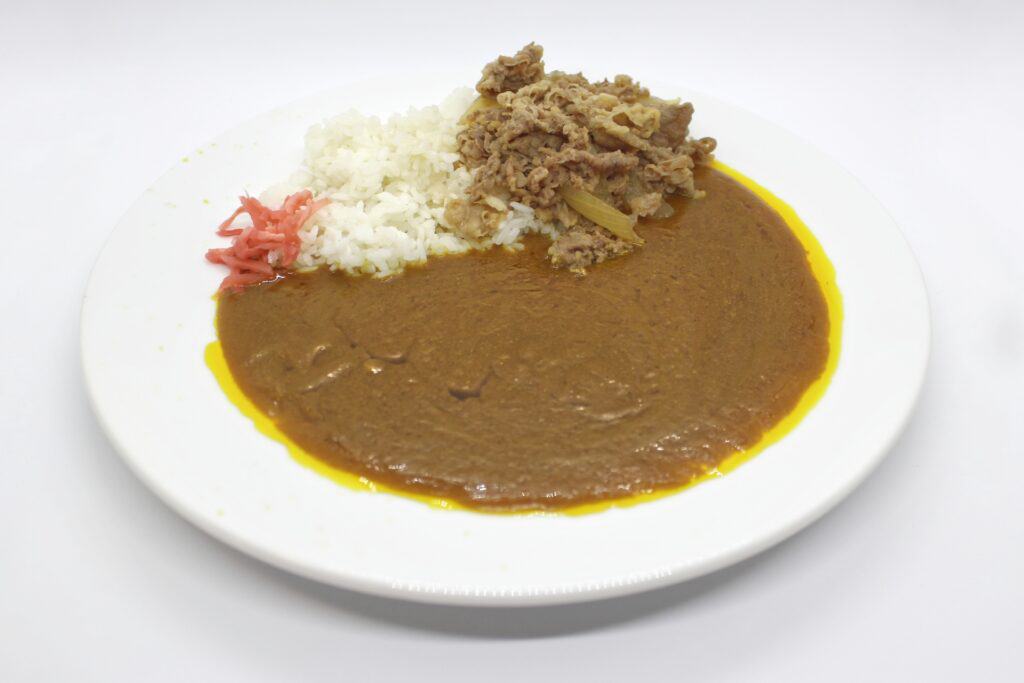
Everywhere You Turn
With over 4,000 combined locations across Japan, the Big Three ensure you’re never more than a short walk from your next beef bowl fix. Urban center or rural outpost—gyudon finds a way.
Surprisingly Nutritious
Don’t let the speed fool you—these aren’t empty calories. According to Yoshinoya’s own data, a regular beef bowl delivers approximately one-quarter to one-third of your daily recommended protein, fats, and carbohydrates. Fast food that actually fuels you properly.
Night Owls Welcome: The 24-Hour Revolution
Long before 7-Eleven lit up Japan’s nights, gyudon chains were already feeding the midnight masses. This cultural revolution ignited around 1972 when Yoshinoya boldly flipped their “CLOSED” signs to “ALWAYS OPEN.” This seismic shift transformed Japanese eating habits overnight, creating entirely new lifestyle patterns: breakfast on-the-go, midday hunger fixes, and those essential post-drinking meals that prevent morning regrets. This innovation didn’t just change dining—it catalyzed an entirely new relationship between Japanese society and food availability.
Bottomless Rice Bonanza: The Big Eater’s Paradise
While the Big Three chains run neck-and-neck on most metrics, one policy creates a clear dividing line for serious eaters: the unlimited rice refill. Both Yoshinoya and Matsuya offer all-you-can-eat rice with their set meals (Sukiya stands alone in refusing this generosity).
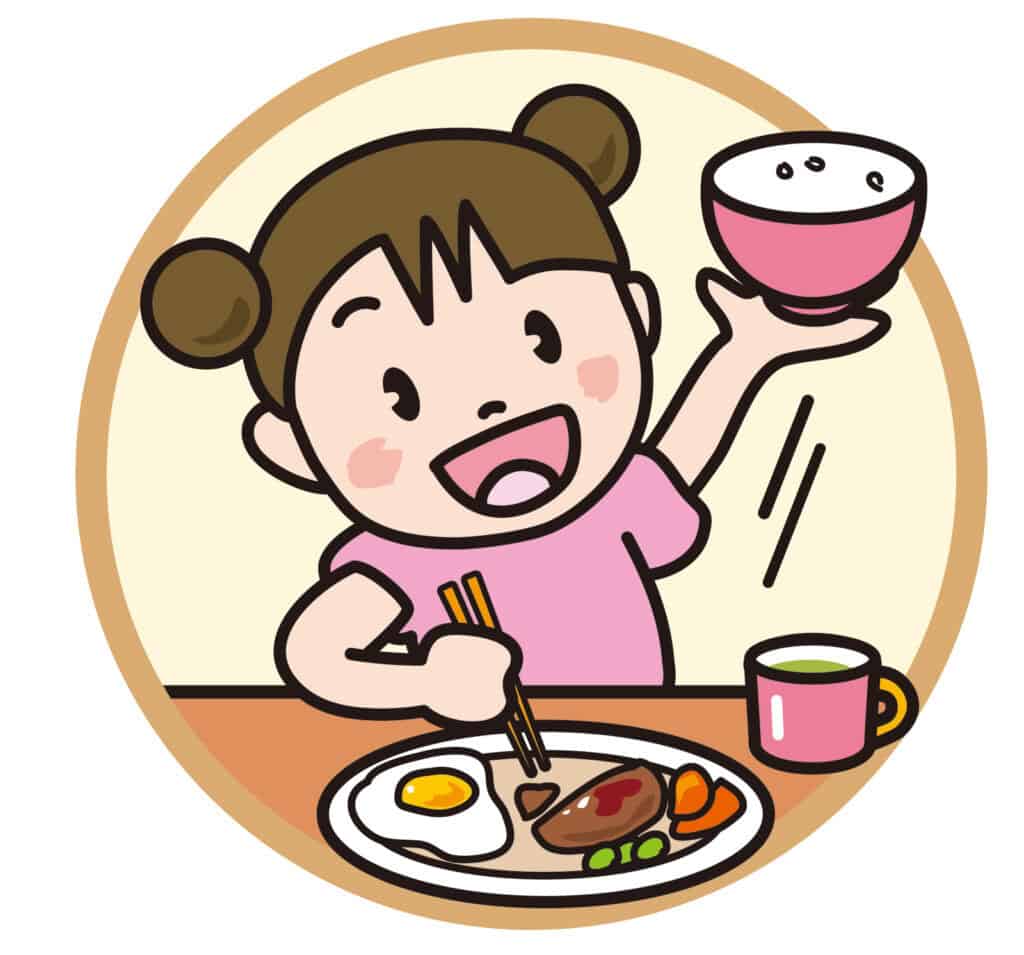
The Budget Feast Showdown
For hungry travelers watching their wallets, let’s crunch the numbers: A filling dinner at the popular budget chain Gyoza no Ohsho (餃子の王将)—featuring their miso ramen (¥715) plus gyoza and rice set (¥638)—will drain ¥1,353 from your budget. Even at this renowned “cheap eats” destination, you’re still spending serious cash. Compare that to Yoshinoya’s beef kalbi set with all the trimmings at just ¥767, or go nuclear with their double-topping mega set featuring both kalbi and regular beef for ¥987.
The secret weapon? Those free rice refills let you easily demolish 2-3 bowls with either set, creating a veritable feast that silences even the loudest stomach growls. Budget-conscious travelers with monster appetites have found their Tokyo home. (Prices current as of March 2025, and while technically “promotional,” these refill policies have remained in place for years).
Morning Champion: Matsuya’s Breakfast Domination
The breakfast battlefield in Japan offers plenty of contenders: McDonald’s morning sets, standing-room udon shops with rice (¥400-500), convenience store sandwich-coffee combos (¥350-400), or Starbucks’ premium morning fare (¥700-800).
Enter Matsuya—the undisputed heavyweight champion with its Special Morning Beef Set at a jaw-dropping ¥390. This morning masterpiece delivers unlimited rice, savory beef with fresh vegetables, pickles, steaming miso soup, and nori seaweed. The competition isn’t just beaten—it’s completely annihilated.

The Ultimate Power Breakfast
For serious morning protein hunters, Matsuya’s sister operation Matsunoya offers the Morning Special Tonkatsu Set (¥590). This beast includes:
- Unlimited rice mountains
- Golden-fried tonkatsu (breaded pork cutlet)
- Mountain of shredded cabbage
- Steaming miso soup
- Your choice of power-up: fresh salad, natto, raw egg, or tofu
The author’s personal attack strategy? Order with natto, add salad (¥100 extra), begin with an extra-large rice portion, followed by a regular refill. Total damage: just ¥690 for a meal that fuels you until dinner. (Note: Not all locations serve the morning tonkatsu—check before you set your heart on it).
While Matsunoya specializes in tonkatsu and Matsuya focuses on beef, they frequently share the same physical space—different counters, same building.

From Forbidden Food to Fast-Food Empire: The Gyudon Saga
Yoshinoya—the godfather of beef bowls—planted its flag over 100 years ago in 1899 at Tokyo’s bustling Nihonbashi fish market. This wasn’t just any business launch; it represented a cultural rebellion. Only decades earlier (around 1862), Japan had lifted its centuries-old prohibition on meat consumption, triggering a “beef hot pot” (gyunabe) explosion that saw over 550 specialty shops bloom across Tokyo.
Amid this carnivorous renaissance, beef bowl shops began their quiet revolution. Though initially operating as conventional eateries, Yoshinoya’s game-changing 1972 decision to never close its Shinbashi location sparked the revolution that would transform Japanese dining forever.

The Throne Usurped: Sukiya’s Strategic Conquest
After decades of unchallenged reign, the original beef bowl king Yoshinoya surrendered its crown in 2008 to the aggressive upstart Sukiya. The battlefield stats tell the story: as of July 2023, Yoshinoya commands 1,213 locations, Matsuya holds 1,001, while Sukiya dominates with a massive 1,941-restaurant empire.
The Family-First Strategy
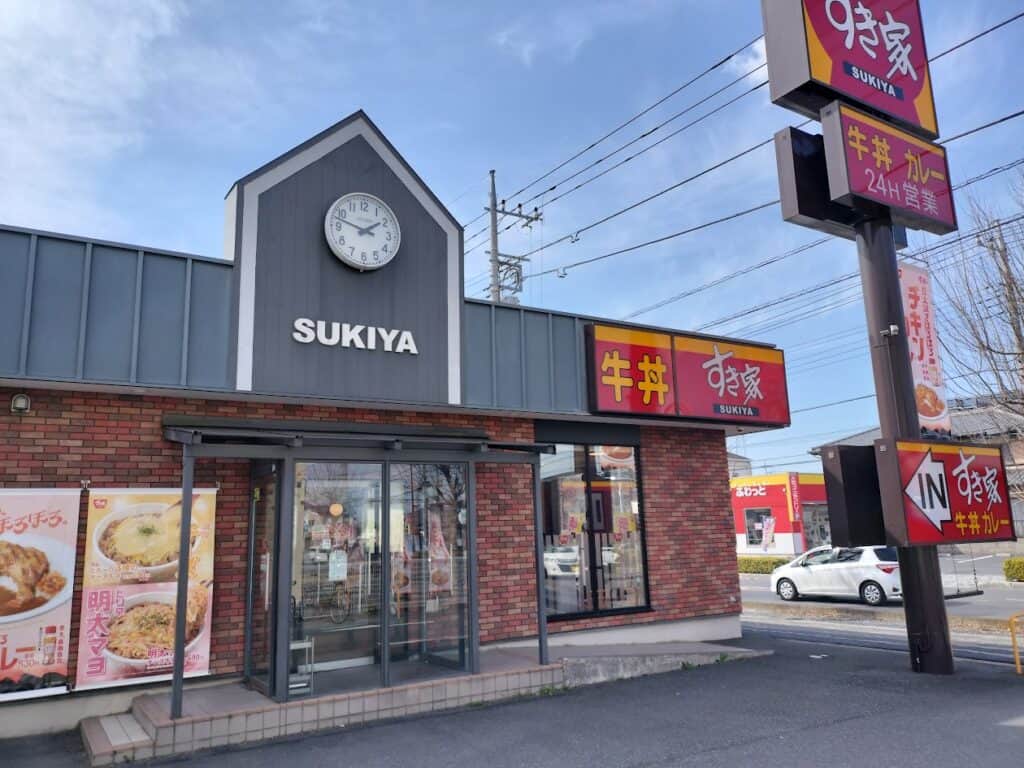
How did Sukiya engineer this coup? By shattering Yoshinoya’s entrenched image as “quick fuel for working men” and deliberately courting the previously ignored family and female demographics. While Yoshinoya and Matsuya fought over urban territory (particularly Tokyo’s concrete jungle), Sukiya executed a brilliant flanking maneuver—aggressively expanding into suburban and rural Japan with family-oriented stores featuring more tables, child seating, and menu innovations targeting women and children with healthier options and kid-friendly meals.
Navigation Guide: Mastering the Beef Bowl Experience
Each chain has its own dining protocol. Here’s how to look like a local from entrance to exit:
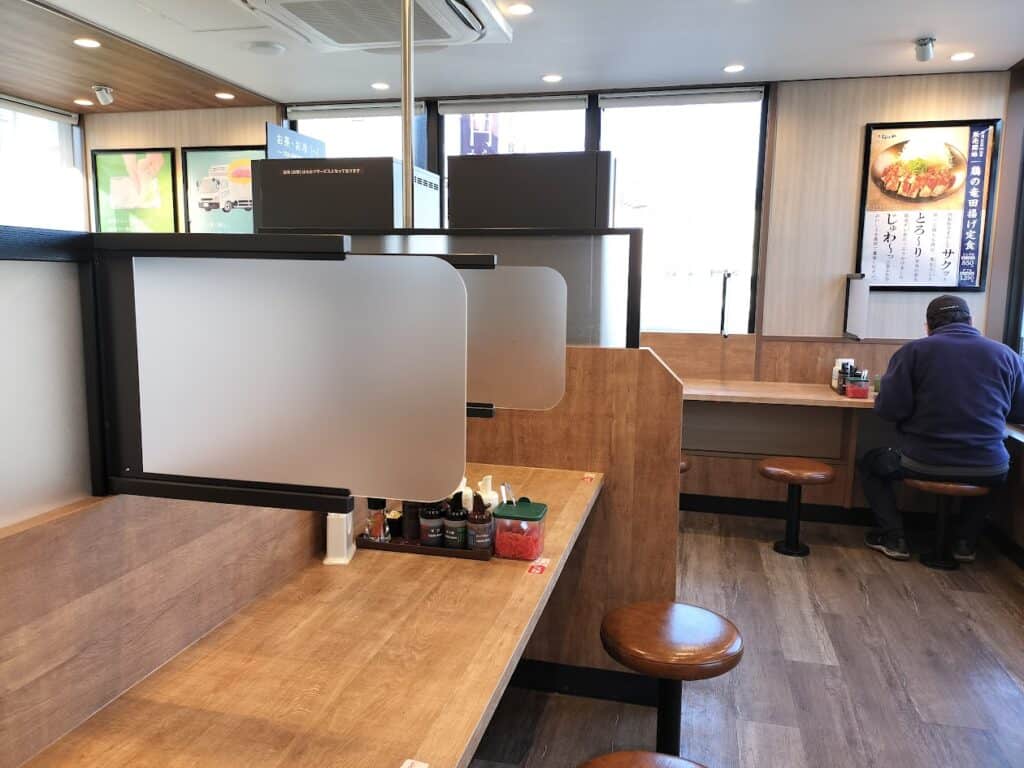
Matsuya & Matsunoya: The DIY Experience
The most self-service oriented of the Big Three—you handle everything except cooking.
- Enter and feed the vending machine your cash (machines offer English and other languages)
- Claim any open seat—no waiting to be seated
- Watch the digital display for your three-digit ticket number to appear
- When summoned, exchange your ticket for your meal at the counter
- While waiting, help yourself to free hot/cold water or tea from self-serve stations
- After demolishing your meal, return your dishes to the designated area and exit
Sukiya: The Hybrid Approach
- Enter and either take a counter seat (during rush hours or solo dining) or any available table (slower times)
- Staff will deliver your water, but you’ll order via tableside tablet with multiple language options
- Your food arrives via human server, complete with receipt
- After eating, leave dishes but take your receipt to the cashier for payment
Yoshinoya: The Classic Service
The most traditional service model of the three:
- Enter and select any seat (counter preferred for solo diners, tables available for groups)
- No host or seating chart—just find your spot
- Staff brings water and takes your order in person (menus provided if needed)
- Need something? Staff stays within eyesight—just raise your hand or call out
- When finished, leave your dishes but take your receipt as you stand
- Pay at either the central register or counter register depending on the location’s layout

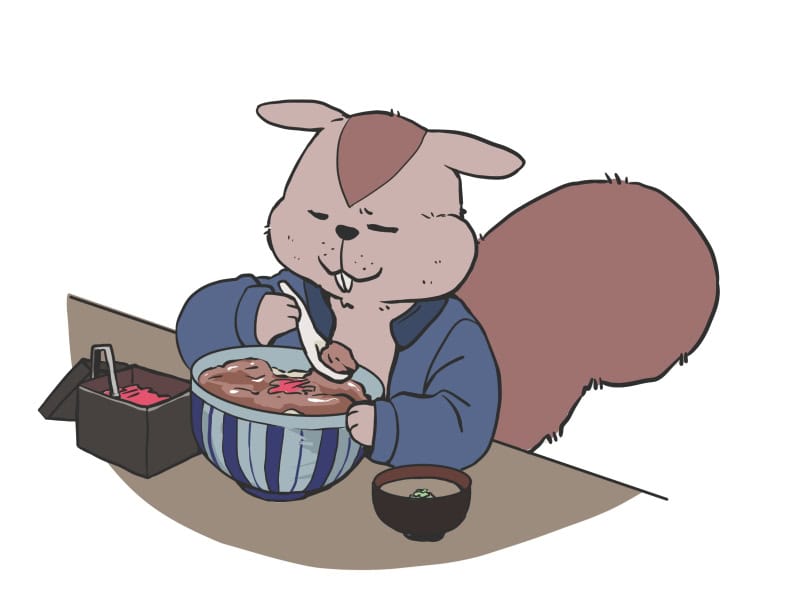

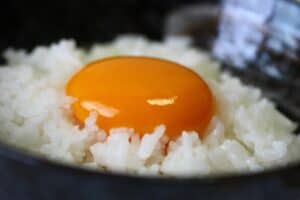

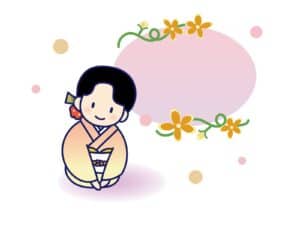
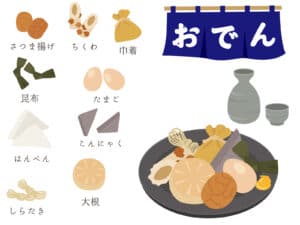
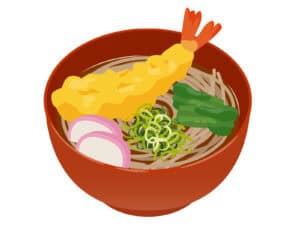

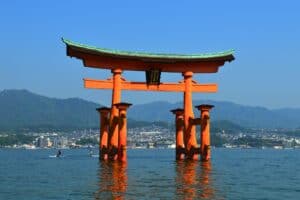
コメント